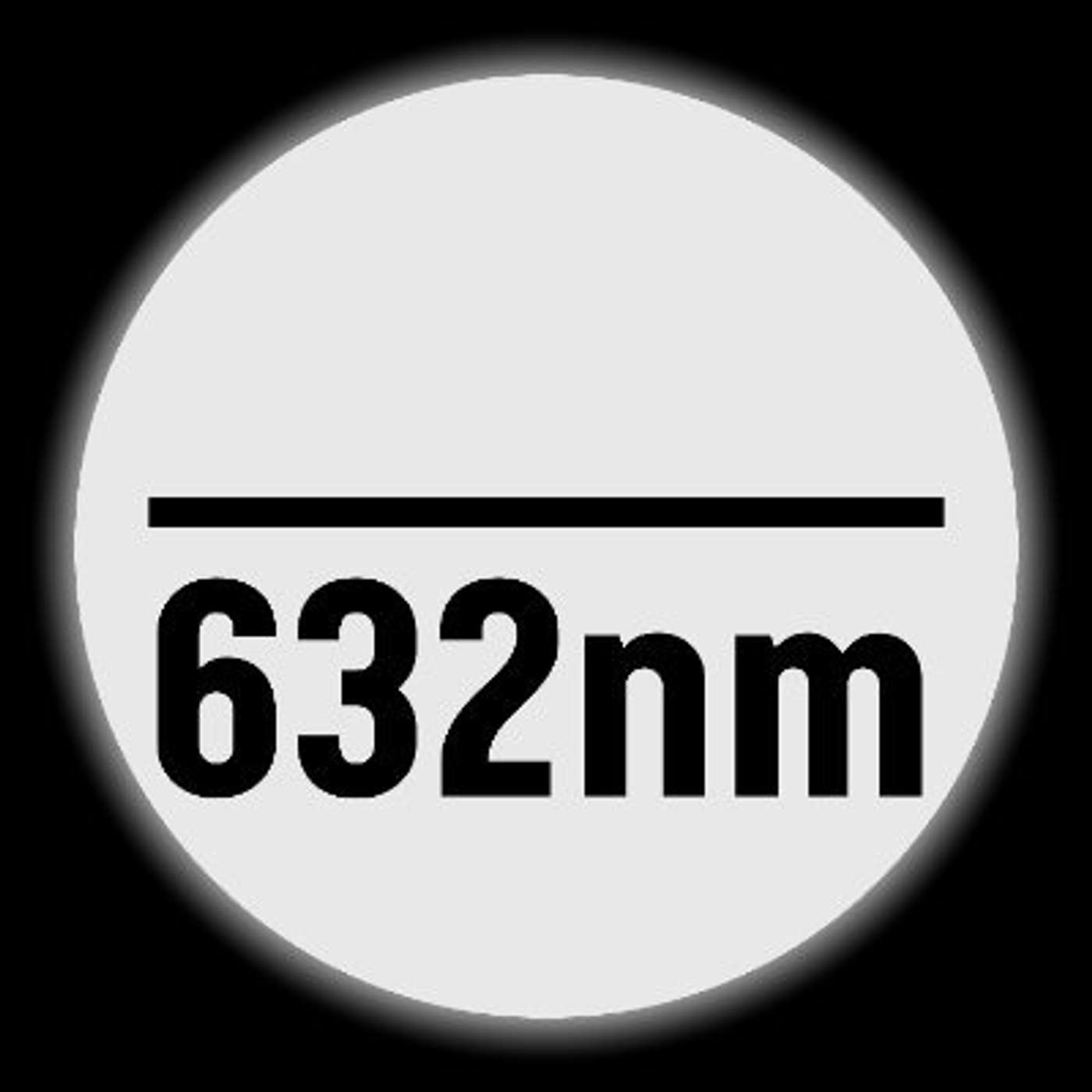

632nm
Misha Shalaginov, Michael Dubrovsky, Xinghui Yin
Technical interviews with the greatest scientists in the world.
Episodes
Mentioned books

14 snips
Aug 12, 2025 • 1h 31min
Biology's Biggest Chicken and Egg Problem | Jacob Fine
In this engaging conversation, Jacob Fine, a graduate student researcher in Computational Biology from the University of Toronto, discusses the critical role of RNA in the origins of life and the ongoing debate between RNA and protein-first theories. The unique setting of a Russian sauna adds an intriguing touch as they explore concepts of entropy and information theory. Fine also shares insights on genetic errors and the importance of interdisciplinary collaboration in understanding life's complexities, all while challenging conventional perceptions about scientific breakthroughs.

Aug 5, 2025 • 2h 16min
The Final Interview with MIT Physicist Keith Johnson
One of Keith Johnson’s final interviews: a brilliant mind on dark matter, water, and fusion.Read about Keith’s legacy here: https://news.mit.edu/2025/keith-johnson-materials-scientist-independent-filmmaker-dies-0723This episode is one of the final recorded conversations with MIT physicist Keith Johnson, who passed away just weeks after our interview. In this conversation, he unpacks his early research on the quantum structure of matter, his cold fusion theories, and how it all led to a screenplay about a young female physicist. Johnson also suggests a radical idea: water clusters in space might explain some aspects of dark matter. A one-of-a-kind interview that blends science, art, and speculation.We’re honored to share this glimpse into Keith’s remarkable intellect, creativity, and curiosity. May his legacy continue to inspire.Follow us for more technical interviews with the world’s greatest scientists:Twitter: https://x.com/632nmPodcastInstagram: https://www.instagram.com/632nmpodcast?utm_source=ig_web_button_share_sheet&igsh=ZDNlZDc0MzIxNw==LinkedIn: https://www.linkedin.com/company/632nm/about/Substack: https://632nmpodcast.substack.com/Follow our hosts!Michael Dubrovsky: https://x.com/MikeDubrovskyMisha Shalaginov: https://x.com/MYShalaginovXinghui Yin: https://x.com/XinghuiYinSubscribe:Apple Podcasts: https://podcasts.apple.com/us/podcast/632nm/id1751170269Spotify: https://open.spotify.com/show/4aVH9vT5qp5UUUvQ6Uf6ORWebsite: https://www.632nm.comTimestamps:00:00 - Intro01:03- Early Life and Education03:27 - Graduate Studies and Research Funding05:44 - Postdoctoral Work and Quantum Chemistry09:45 - Starting at MIT and Collaborations15:05 - Cold Fusion and Film Making23:38 - Keith's First Screenplay28:55 - Filming a Movie at MIT43:50 - Water Clusters and Quantum Energy53:54 - Is Cold Fusion Possible?1:07:13 - Challenges in Fusion Energy1:12:09 - Advice for Young ScientistsAPPENDIX:1:15:42 - Water Might Be Connected to Dark Matter1:24:49 - Cosmic Dust and Supernovae1:28:36 - The Role of Water in the Universe1:38:32 - The Future of Dark Matter Research1:51:27 - Water Might Have Been Created Sooner After the Big Bang#KeithJohnson #MIT #ScienceAndStorytelling #QuantumPhysics #DarkMatter #Astrobiology #BreakingSymmetry

Jul 29, 2025 • 1h 44min
How We Build Telescopes to Explore the Early Cosmos | Brian Keating
Did the Big Bang really happen? Telescopes, dark matter & cosmic origins explored.Join cosmologist Brian Keating as we explore the mysteries of the universe, from building telescopes at the South Pole to measuring the polarization of the cosmic microwave background and chasing signs of gravitational waves. We discuss Galileo’s influence, cosmic inflation, and how the Nobel Prize could be changed to better reflect the way we do science. Follow us for more technical interviews with the world’s greatest scientists:Twitter: https://x.com/632nmPodcastInstagram: https://www.instagram.com/632nmpodcast?utm_source=ig_web_button_share_sheet&igsh=ZDNlZDc0MzIxNw==LinkedIn: https://www.linkedin.com/company/632nm/about/Substack: https://632nmpodcast.substack.com/Michael Dubrovsky: https://x.com/MikeDubrovskyMisha Shalaginov: https://x.com/MYShalaginovXinghui Yin: https://x.com/XinghuiYinSubscribe:Apple Podcasts: https://podcasts.apple.com/us/podcast/632nm/id1751170269Spotify: https://open.spotify.com/show/4aVH9vT5qp5UUUvQ6Uf6ORWebsite: https://www.632nm.com

15 snips
Jul 15, 2025 • 2h 2min
Quantum Complexity: Scott Aaronson on P vs NP and the Future
Scott Aaronson, a renowned theoretical computer scientist and quantum computing pioneer, shares his journey from early math fascination to cutting-edge complexity theory. He demystifies the P vs NP problem, revealing its profound implications for cryptography and AI. The conversation dives into the frontiers of quantum computing, discussing quantum supremacy, Shor's algorithm, and the concept of quantum money. Aaronson also speculates on the future of fault-tolerant quantum computers and the ultimate limits of computability, leaving listeners intrigued by the mysteries of nature.

Jun 24, 2025 • 1h 33min
Science Memes, Epigenetic Inheritance, and Rethinking Peer Review
Oded Rechavi, a biologist from Tel Aviv University and C. elegans expert, dives deep into groundbreaking topics. He explains how C. elegans can pass traits through small RNAs, reshaping our understanding of heredity. The conversation shifts to innovative methods using Toxoplasma gondii as a protein delivery system for potential therapies. Rechavi also critiques the flawed aspects of scientific publishing, proposing AI solutions to accelerate peer review and enhance the quality of research. His insights blend humor and science, making complex ideas accessible.

Jun 6, 2025 • 2h 21min
Quantum Diamond Sensing: The Surprising Power of NV Centers
In this episode of the 632nm podcast, we explore how diamond-based nitrogen vacancy (NV) centers went from being a curiosity in gemstone physics to a transformative tool for precision magnetometry. You’ll hear how these tiny defects enable room-temperature quantum sensing, providing ultra-high spatial resolution and remarkable resilience in extreme conditions—from planetary research unlocking secrets of our solar system’s earliest days to potential biomedical diagnostics. Our guest recounts the serendipitous connections, engineering challenges, and surprising scientific discoveries along the way.We also discuss how interdisciplinary collaborations spark new ideas, how startups and academia differ in their pursuit of quantum breakthroughs, and why community-driven science can accelerate major scientific leaps.00:42 The Fascination with Diamonds and NV Centers02:58 Early Research and Collaborations10:21 Breakthroughs and Applications in Science50:48 Advancements in Magnetic Imaging51:59 Commercial Applications of Quantum Diamond Microscopes01:02:16 Challenges in Translating Research to Products01:11:11 Future Prospects and Innovations01:36:46 Exploring Quantum Systems and Defects01:39:03 The Harvard Quantum Community01:44:53 Precision Measurement and Quantum Applications01:54:28 Advice for Aspiring Scientists*Follow us:*Twitter: https://x.com/632nmPodcastSubstack: https://632nmpodcast.substack.com/Michael Dubrovsky: https://x.com/MikeDubrovskyMisha Shalaginov: https://x.com/MYShalaginovXinghui Yin: https://x.com/XinghuiYin*Subscribe:*Apple Podcasts: https://podcasts.apple.com/us/podcast/632nm/id1751170269Spotify: https://open.spotify.com/show/4aVH9vT5qp5UUUvQ6Uf6ORWebsite: https://www.632nm.com

May 19, 2025 • 2h 19min
Origin of Life, Thermodynamics, and God: Jeremy England
In this episode, Jeremy England reframes the origin of life debate by applying non-equilibrium physics, challenging the notion that life’s emergence must be purely biological or chemical. He describes how matter can “learn” from its environment, drawing on examples from spin glasses, protein folding, and resonating mechanical systems.England also shares how his deep engagement with religious texts—and his unexpected cameo as “the next Darwin” in popular media—shaped his understanding of science and spirituality. From his ordination as a rabbi to his groundbreaking thermodynamic research, England offers a unique perspective on the interplay between faith, scientific inquiry, and the age-old search for meaning.Chapters: 02:59 Jeremy's Journey into Biophysics 08:46 Non-Equilibrium Thermodynamics 35:30 Dissipative Adaptation and Evolutionary Principles 44:34 The Evolution of Energy Consumption 51:35 Thermodynamics in Microbiomes and Ecology 57:18 Protein Folding and Cellular Computation 01:01:43 Origins of Life and Prebiotic Scenarios 01:26:02 Exploring Thermodynamic Constraints on Aging 01:31:48 Science, Religion, and the Infinite Regress 01:36:04 Jewish Law and Modern Materials 01:39:47 Torah's Approach to Existence 02:01:56 Moses' Signs and Worldview 02:09:03 Balancing Practicality and Spirituality 02:14:02 Advice for Aspiring ScientistsMore About Jeremy:Twitter: Jeremy England (@lifelikephysics) / XBook: https://www.amazon.com/Every-Life-Fire-Thermodynamics-Explains/dp/1541699017Follow us:Twitter: https://x.com/632nmPodcastSubstack: https://632nmpodcast.substack.com/Michael Dubrovsky: https://x.com/MikeDubrovskyMisha Shalaginov: https://x.com/MYShalaginovXinghui Yin: https://x.com/XinghuiYinSubscribe:Apple Podcasts: https://podcasts.apple.com/us/podcast/632nm/id1751170269Spotify: https://open.spotify.com/show/4aVH9vT5qp5UUUvQ6Uf6ORWebsite: https://www.632nm.com

May 10, 2025 • 47min
Flux Grant by 1517 Fund: Backing Garage Science and Sci-Fi Tech
In this episode of the 632nm podcast, we sit down with 1517 Fund’s Danielle Strachman and Michael Gibson to explore their Flux program, a unique pre-seed fellowship backing wild, unorthodox scientific and technical ideas. They share how they’ve helped founders transform “garage science” projects—like nuclear batteries, quantum computing prototypes, and cutting-edge materials—into serious startups. Along the way, they discuss the pitfalls of chasing academic prestige, the power of genuine curiosity, and how to leverage minimal resources for big ambitions.We also learn about the flexibility of Flux’s “cannon launch” grants, what it takes to persuade investors when your idea sounds like sci-fi, and why “hyper-fluency” and high agency are crucial for founders. Whether you’re a postdoc itching to leave the lab or a solo tinkerer with a radical concept, this conversation offers actionable insights on securing early funding and taking that bold plunge into world-changing tech.Our Guests:Danielle Strachman: https://x.com/DStrachmanMichael Gibson: https://x.com/William_Blake1517 Fund: https://t.co/Ltt0eiRJkzWant to apply for Flux? https://t.co/O8b5C0f21sFollow us:Twitter: https://x.com/632nmPodcastSubstack: https://632nmpodcast.substack.com/Michael Dubrovsky: https://x.com/MikeDubrovskyMisha Shalaginov: https://x.com/MYShalaginovXinghui Yin: https://x.com/XinghuiYinSubscribe:Apple Podcasts: https://podcasts.apple.com/us/podcast/632nm/id1751170269Spotify: https://open.spotify.com/show/4aVH9vT5qp5UUUvQ6Uf6ORWebsite: https://www.632nm.com/

May 2, 2025 • 2h 25min
Trapped Ion Quantum Computing: Christopher Monroe of IonQ
In this episode of the 632nm podcast, our guest traces the evolution from the early days of Bose-Einstein condensation experiments to pioneering trapped ion quantum gateways. He reveals how breakthroughs in laser cooling and atomic clock research unexpectedly paved the way for the first quantum logic gates, beating out the BEC community at a pivotal conference. We also hear about the surprising roles of entanglement, error mitigation, and photonic interconnects in shaping modern quantum hardware.The conversation shifts to the commercial world, where government funding, venture capital, and startup challenges collide. Our guest shares insider stories about forming one of the first pure-play quantum computing companies, securing multi-million-dollar investments, and navigating the highs and lows of going public. From laser noise and integrated photonics to the promise of game-changing heuristic algorithms, this episode offers a rare look at both the science and business driving trapped ion quantum computing.Chapters:01:48 Journey into Trapped Ions 03:57 Early Career and Research at NIST08:13 The Path to Bose-Einstein Condensate 11:32 Applications and Implications of BEC 22:05 Measuring Ultra-Low Temperatures 27:46 Advancements in Atomic Clocks 35:09 Challenges in Atomic Clock Precision 43:39 Historical Development of Quantum Computing 50:30 Early Experiments and Advances in Ion Traps 01:02:59 Understanding Dipole-Dipole Shifts in Quantum Systems 01:04:18 Initializing Qubits in Quantum Computing 01:09:05 Challenges in Scaling Quantum Computers 01:13:14 Fidelity and Error Correction in Quantum Gates 01:17:51 Laser Noise and Quantum Computing Limitations 01:35:08 Commercializing Quantum Computing: The IonQ Story 01:41:53 Bitcoin and Quantum Computing Threats 01:44:09 IonQ's Journey and Going Public 01:46:39 Quantum Computing Applications and Challenges 01:55:44 Quantum Hardware and Interconnects 02:21:01 Speculative Future of Quantum ComputingFollow us:Twitter: https://x.com/632nmPodcastSubstack: https://632nmpodcast.substack.com/Michael Dubrovsky: https://x.com/MikeDubrovskyMisha Shalaginov: https://x.com/MYShalaginovXinghui Yin: https://x.com/XinghuiYinSubscribe:Apple Podcasts: https://podcasts.apple.com/us/podcast/632nm/id1751170269Spotify: https://open.spotify.com/show/4aVH9vT5qp5UUUvQ6Uf6ORWebsite: https://www.632nm.com

7 snips
Apr 14, 2025 • 2h 8min
Maintaining Moore's Law: Lithography, Semiconductors, and Chip Fabrication with Mordechai Rothschild
In this episode of the 632nm podcast, we explore how 193nm lasers unexpectedly overtook x-ray approaches and reshaped semiconductor manufacturing. Physicist Mordechai Rothschild describes the breakthroughs that turned a once “impossible” technology into the mainstay of chip fabrication, including the discovery of specialized lenses, the invention of chemically amplified resists, and the game-changing flip to immersion lithography. We also hear candid insights on the race to push below 13.5 nanometers, where new ideas in plasma sources and advanced coatings might one day carry Moore’s Law even further.Dr. Mordechai Rothschild is a leading physicist and technologist at MIT Lincoln Laboratory, serving as Principal Staff in the Advanced Technology Division. He has been instrumental in advancing micro- and nanoscale systems, with significant contributions to 193-nm photolithography—a technology critical to modern semiconductor manufacturing. His work has earned him the 2014 SPIE Frits Zernike Award and the 2015 Edwin H. Land Medal. With over 220 publications and 16 patents, Rothschild's research spans metamaterials, microfluidics, and nanofabrication. He holds a BS in physics from Bar-Ilan University and a PhD in optics from the University of Rochester.01:22 Early Days and Technological Challenges08:54 The Role of Photoresist in Lithography19:39 The Rise of X-ray Lithography25:52 Global Competition and Geopolitics28:45 Challenges and Future of Lithography44:33 Introduction to Excimer Lasers47:54 Applications of 193nm Lasers49:41 Development of Reliable Laser Sources58:38 Lens Aging and Material Challenges01:01:10 Exploring Alternative Materials01:07:41 Liquid Immersion Lithography01:15:21 Engineering Complex Lithography Systems01:23:43 Immersion Lithography Insights01:24:33 Prototype to Foundry Adoption Timeline01:25:41 Challenges in EUV Development01:32:24 Personal Journey to Lincoln Lab01:38:59 Exploring Advanced Lithography01:57:26 Future of Moore's Law and Lithography02:06:40 Advice for Young ScientistsSubscribe:Apple PodcastsSpotifyRSSFollow us:Twitter: https://x.com/632nmPodcastSubstack: https://632nmpodcast.substack.com/Michael Dubrovsky: https://x.com/MikeDubrovskyMisha Shalaginov: https://x.com/MYShalaginovXinghui Yin: https://x.com/XinghuiYin


